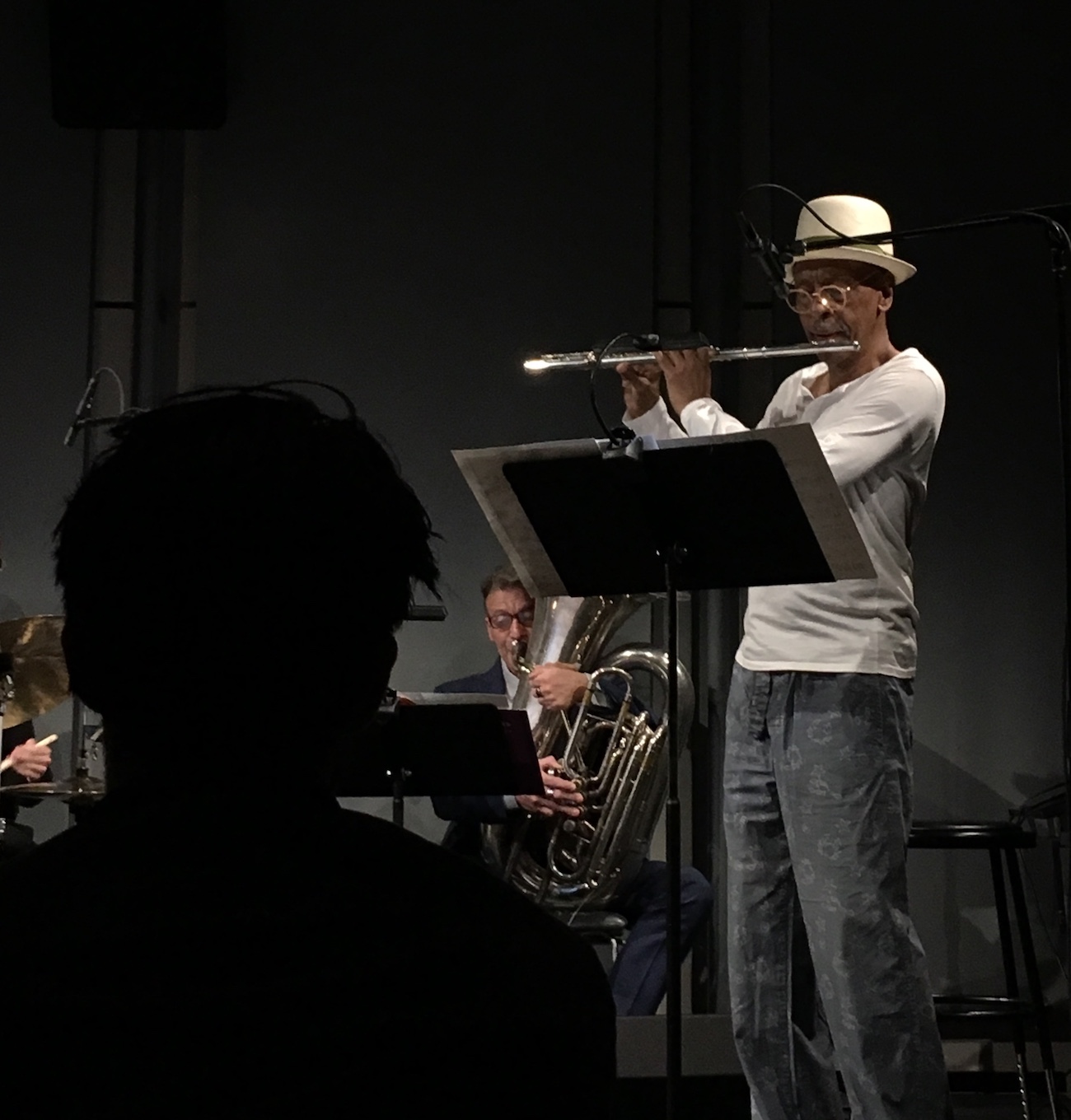[ad_1]
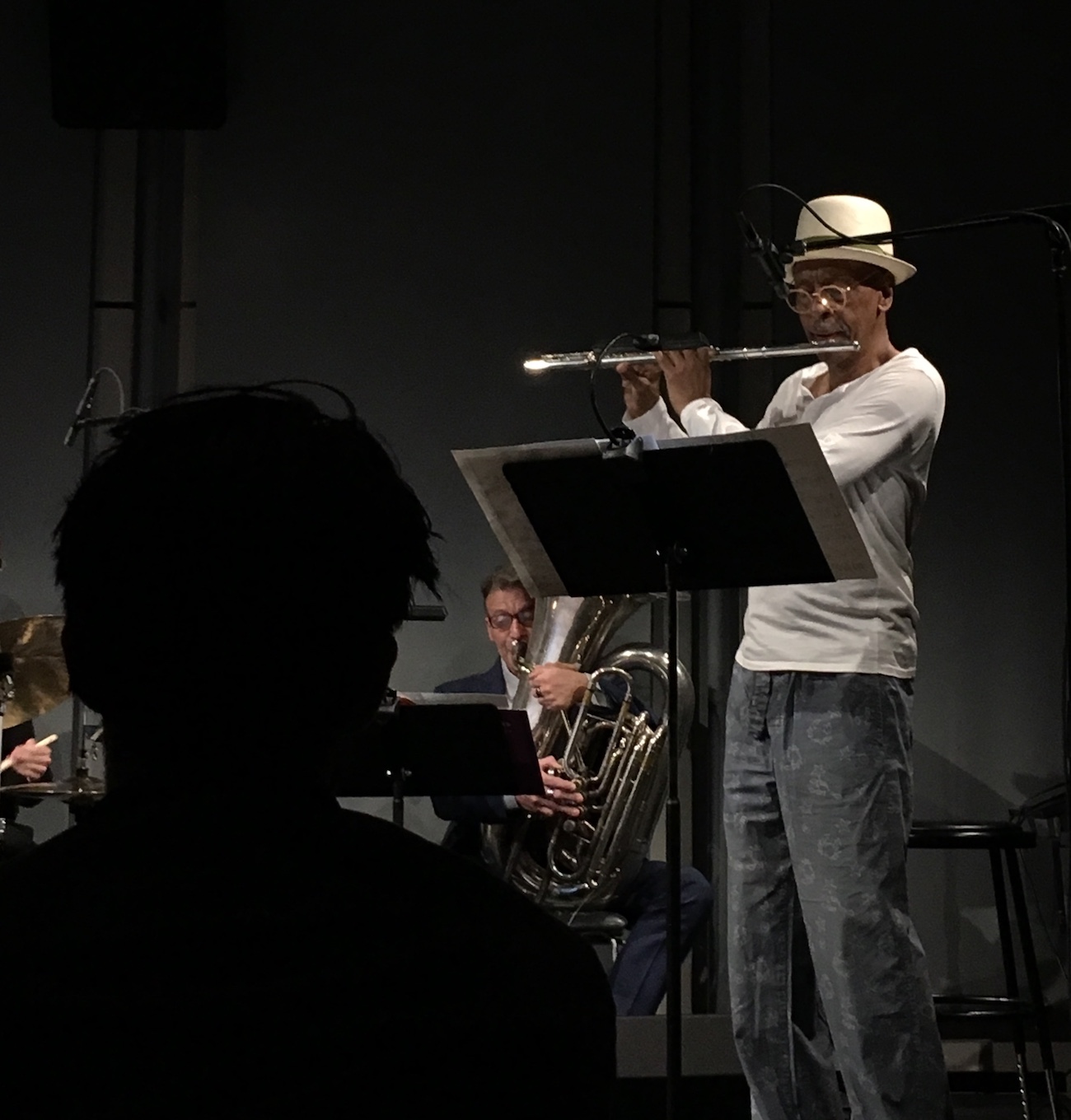
Henry Threadgill performing 6 to 5, 5 to 6 at the Whitney Museum.
ANDY BATTAGLIA/ARTNEWS
‘Now you see him, now you don’t,” Henry Threadgill said—with a laugh suggestive of both serious reverence and contented confusion—about David Hammons, an artist whose elusiveness is well known. The occasion was a phone call with ARTnews a few weeks ago, shortly after Threadgill had finished writing 6 to 5, 5 to 6, a composition he performed on Monday night at the Whitney Museum in New York for a ceremony celebrating Hammons’s ambitious and mostly invisible monument to be built on the footprint of a former pier on Manhattan’s far west side.
Hammons likes jazz and, with the Whitney, tapped Threadgill, a Pulitzer Prize–winning composer with jazz roots dating to the ’70s, to write a two-part piece in commemoration of Day’s End, a soon-to-be realized sculptural intervention across the West Side Highway from the museum. Monday’s event celebrated the ground-breaking for the work, which is set to open in fall 2020.
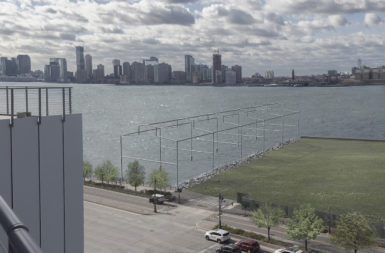
Rendering of David Hammons’s Day’s End, as it will appear from the Whitney Museum.
COURTESY GUY NORDENSON AND ASSOCIATES
“It’s very minimal—you can see straight over to Jersey through it,” Threadgill said of the public installation, which will jut out into the Hudson River as a “ghost monument” (as the Whitney has called it) to a site of art-historical import: Gordon Matta-Clark’s 1975 masterwork, Day’s End, which once stood there, a striking sculptural cut he made in the wall of an immense derelict building on Pier 52.
The reference to Matta-Clark is clear, but Threadgill pointed out a less familiar one he came to know while learning about the thinking behind Hammons’s homage: Astor Piazzola, a storied Argentine tango composer who lived in New York for years before his death in Buenos Aires in 1992. “He played the bandoneon. He lived on 9th Street two blocks from where Charlie Parker lived,” Threadgill said, in reference to the saxophone legend known as Bird.
While no descriptions of the project issued by the Whitney so far have referenced the fine art of tango, Threadgill’s performance on Monday was preceded by the spectacular sight of a Staten Island–based fireboat spraying water on the Hudson in a “water tango” display. That came just after opening remarks by Whitney director Adam Weinberg, who spoke of having received “a mysterious and tender sketch of a skeletal, minimal sculpture” from Hammons in 2014 and seeing in it the impetus for a years-long civic undertaking. “I am not sure if David thought of his drawing as a proposal,” Weinberg said, “but we did.”
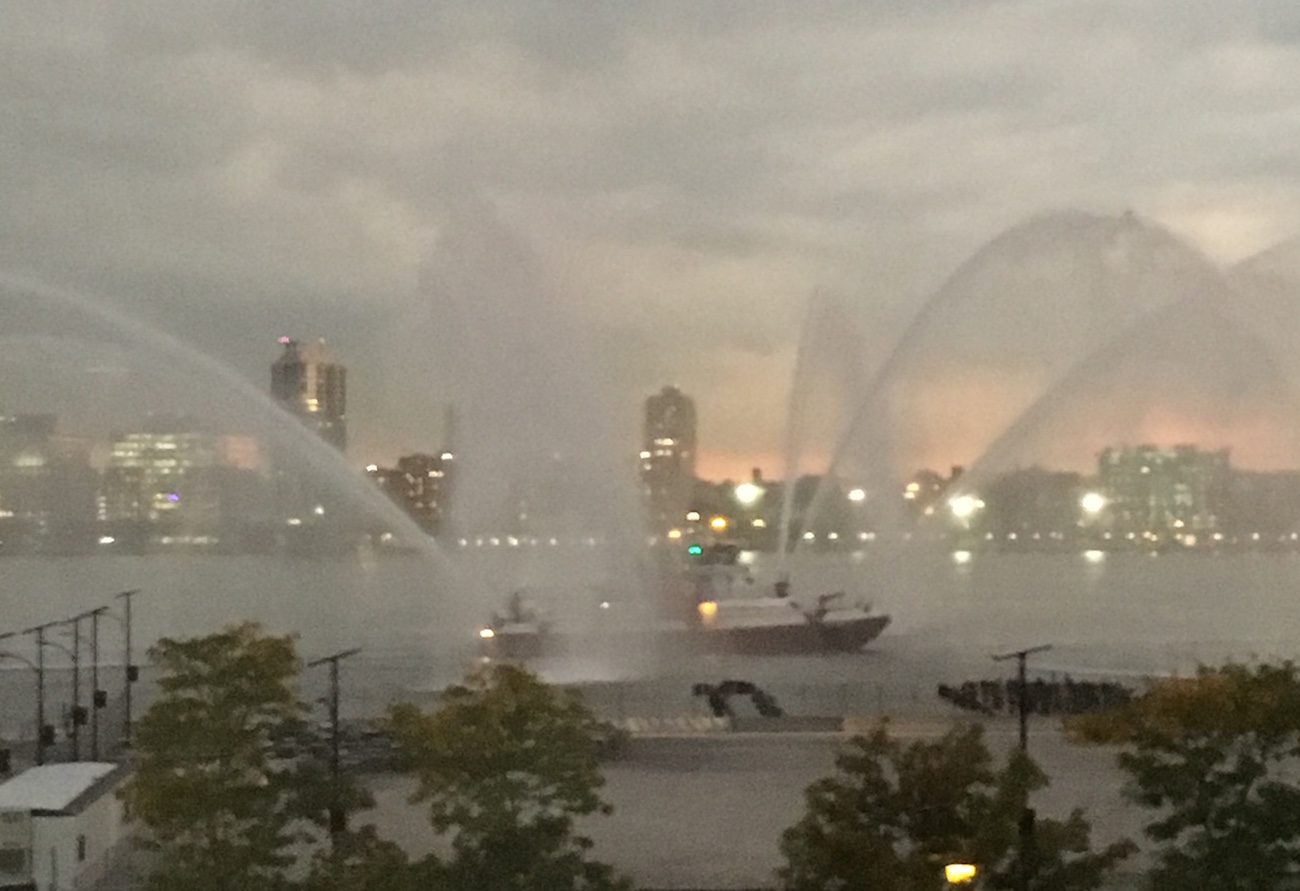
A fireboat’s “water tango” display outside the Whitney Museum, misty in the distance.
ANDY BATTAGLIA/ARTNEWS
Weinberg also announced a $1 million gift from the Keith Haring Foundation to support construction and praised the “evanescent simplicity” of a $17 million project being supported with $4.3 million from New York City. Summing up Hammons’s Day’s End, in terms suited for the artist’s work, Weinberg said, “It is at once a sculpture, a site, a building, a structure, and, yet, none of the above.”
After his speech, the curtains rose in the Whitney’s third-floor theater space to reveal an enormous fireboat floating in the river, and spraying water in patterns that drifted down as mist. It was an unphotographable sight that everyone nonetheless tried to photograph—including Hammons himself, present among all the gawkers trying to capture it on their phones.
Then attention turned to Threadgill and his band on stage. “I looked at the blueprints and pictures of what it’s supposed to look like: the park, the environment,” Threadgill said of the process of composing 6 to 5, 5 to 6. “I put all those things up in front of me and began to put it together from there. It doesn’t really make any sense. I put all those things up and they started to inspire me. I can’t really explain it.”
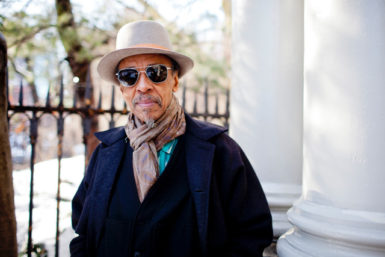
Henry Threadgill.
COURTESY PI RECORDINGS
Threadgill first became aware of Hammons in the ’80s and the two interacted more throughout the ’90s, when they were both connected to the late composer Butch Morris and the Lower East Side arts organization A Gathering of the Tribes, where Hammons is currently a board member. “I don’t know how to describe David,” Threadgill said of an artist who rarely grants interviews and is known for a certain mystique. “He’s a very private, serious artist. Now you see him, now you don’t. He doesn’t do anything to disturb the world. He comes and goes, very quietly, always observing and picking up information. He’s a fly on the wall.”
6 to 5, 5 to 6 was composed in response to a preponderance of the two numbers in the measurements for the design of Day’s End, and it sounded playful and coy, suggestive of a few different compositions sizing each other up so as to maybe coalesce in the end—or maybe not. Whitney chief curator Scott Rothkopf was startled by a drum beat that started it off, jumping what seemed like several feet off the ground, but the rest took on a slinky, sinuous feel as Threadgill played smooth and pointillist passages on the flute and, at intervals, interesting instrumental pairings took precedence, in particular an extended bit when just cello and tuba chatted together as if cruising the pier and getting to know one another after having just met.
Threadgill said he is working on a sound installation with fireboat tones to surround Day’s End when it is complete, and the second part of his composition—for 10 players—will be performed when the monument opens to the public next fall. Whitney performance curator Adrienne Edwards organized the collaboration with Threadgill, and in Hammons, the composer found a sympathetic soul. Of the artist, Threadgill said, “He knows his music.”
[ad_2]
Source link

